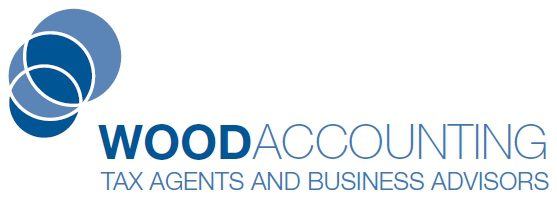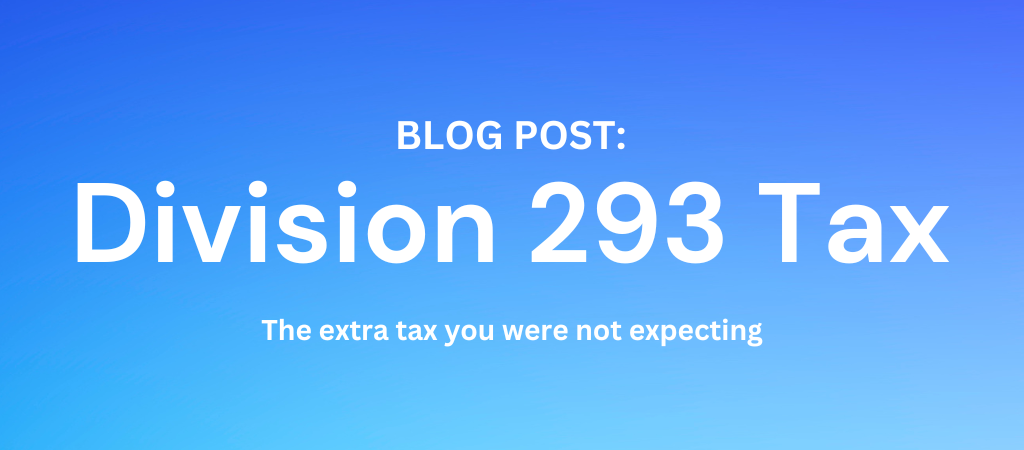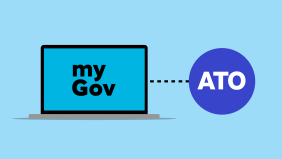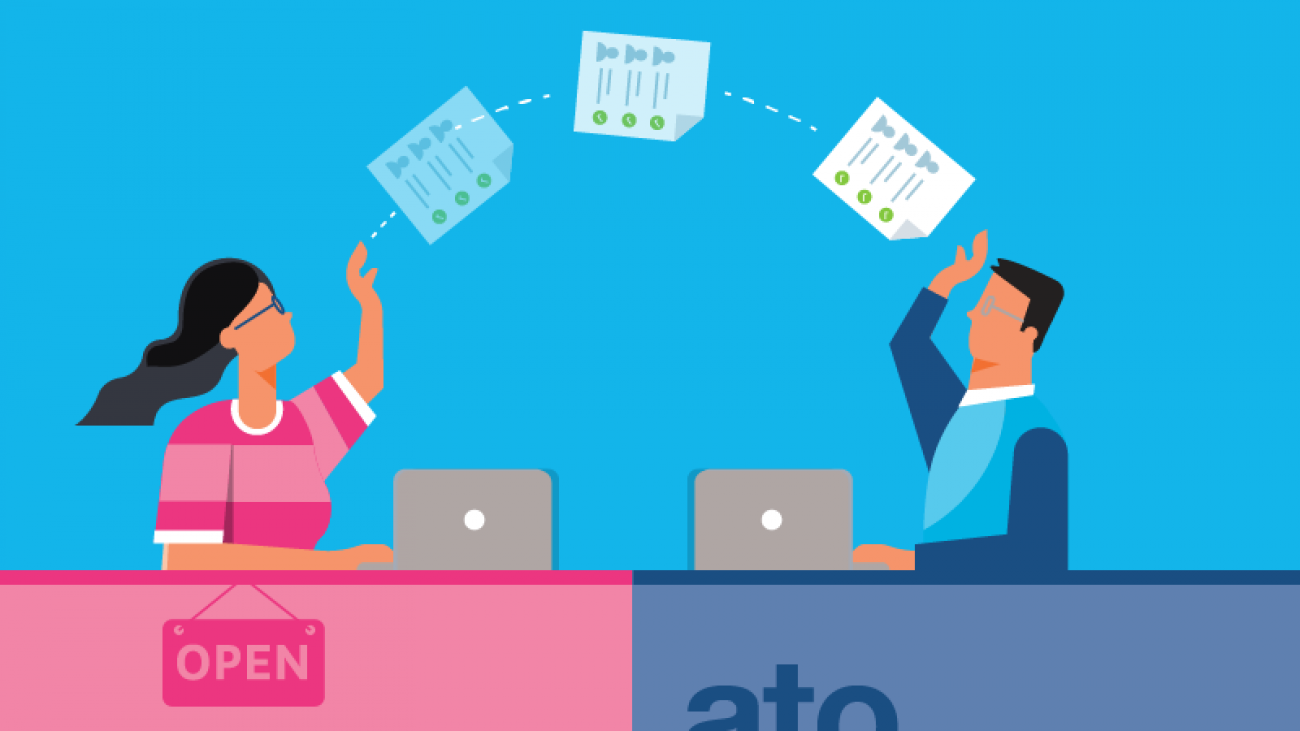It’s a New Financial Year, which means Tax Time is here again!
Our mission is to optimise your tax position based on the current taxation laws.
We aim to get it right the first time. To avoid ATO scrutiny, we don’t do dodgy deductions.
We don’t make the laws but we do help you stay within them. We ask you to be prepared with your deductions and income so we can make an accurate calculation of your tax position.
Below are key points to help you stay on the right side of the ATO.
6 Key Points to Consider for Tax 2023
-
- WAIT – ATO is urging individuals to wait until late July to lodge 2023 tax to avoid mistakes and missed information. You must wait until your Income Statement is TAX READY – You can find your Income Statements via MyGov to check if they are Tax Ready.
-
- DUE DATE – if you are up to date and received a refund in FY22, your due date will be 15 May 2024. So you have plenty of time.
-
- WORK FROM HOME (WFH) DEDUCTION CHANGES: Now that COVID has passed ATO have changed the way you claim WFH.
-
- ATO DATA MATCHING RAMPS UP: ATO are now using big data sets to check your returns. Their main focus is on:
-
- RENTAL PROPERTY LOANS: ATO will have transaction level data on loans so they can check interest and if you are using the loan for private purposes. We will be requesting full loan statements for Tax 23 to pre-check this before we lodge
-
- GIG ECONOMY – Airbnb, Uber, Airtasker, Fivrr, OnlyFans etc. ATO are getting intel on all of these types of income.
-
- ASSET SALES – Capital Gains Tax – ATO continue to track this
-
- ATO DATA MATCHING RAMPS UP: ATO are now using big data sets to check your returns. Their main focus is on:
-
- REFUNDS SHRINK – ATO removed the Low and Middle Income Tax Offset (LMITO). This will mean your refund will be up to $1,500 smaller depending on your income level.
-
- ATO FOCUS AREAS – ATO have announced 3 key focus areas for Tax 2023.
-
- Rental Property Deductions
-
- Work Related Expenses
-
- Capital Gains Tax
-
- ATO FOCUS AREAS – ATO have announced 3 key focus areas for Tax 2023.
1. WAIT TO LODGE
No need to rush to get tax 2023 done. We know people are keen to get their refund BUT rushing to lodge early often leads to mistakes being found by ATO later on.
ATO gather a massive amount of data such as: employment income, bank interest, private health details, share dividends, capital gains, managed fund income etc. This can take a month or more to flow through so the more complex your return, the longer you should wait.
Managed funds are usually the biggest hold up. You will need to wait until October before that information flows though.
2. DUE DATES
Lodging with a registered Tax Agent, like us, affords you a longer time frame to lodge your tax.
| Lodgement Due Date | Description |
|---|---|
| 31 October 2023 | – Tax return for all individuals where one or more prior year tax returns were outstanding as at 30 June 2023. – Also those who self-lodge |
| 31 March 2024 | Tax return for individuals whose latest return resulted in a tax liability of $20,000 or more |
| 15 May 2024 | Tax returns for all remaining individuals and trusts not required earlier (Most People) |
3. WORK FROM HOME (WFH) DEDUCTION CHANGES
The fixed rate method for calculating your deduction for working from home expenses has been revised. This revised method is available from 1 July 2022.
The fixed rate method has been revised to:
-
- increase the rate per work hour that you can claim when you work from home
-
- change the expenses the rate covers
-
- change the records you need to keep
-
- remove the requirement to have a home office set aside for work.
If you don’t use the revised fixed rate method, you need to use the actual costs method to claim a deduction for the additional expenses you incur as a result of working from home.
FIXED RATE METHOD
Eligibility to claim
To use the revised fixed rate method, you must:
-
- incur additional running expenses as a result of working from home
-
- have a record of the total number of hours you work from home and the expenses you incur while working at home
-
- have records for expenses the fixed rate per work hour doesn’t cover and that show the work-related portion of those expenses.
How it works
You can claim 67c for each hour you work from home during the relevant income year. The rate includes the additional running expenses you incur for:
-
- home and mobile internet or data expenses
-
- mobile and home phone usage expenses
-
- electricity and gas (energy expenses) for heating, cooling and lighting
-
- stationery and computer consumables, such as printer ink and paper.
The rate per work hour (67c) includes the total deductible expenses for the above additional running expenses. If you’re using this method, you can’t claim an additional separate deduction for these expenses.
More detailed info on the ATO website here
How to claim expenses the fixed rate doesn’t include
You can separately claim a deduction for the work-related use of technology and office furniture such as chairs, desks, computers, bookshelves. These are generally depreciating assets that decline in value over time. You can also claim the repairs and maintenance of these items.
If the item cost $300 or less and you use it mainly for a work-related purpose, you can claim an immediate deduction for the cost in the year you buy it. This may include items, such as keyboards, computer mouses, power boards, desk lamps and chargers.
You can claim a deduction for the decline in value of depreciating assets over the effective life of the item, if it either:
-
- cost more than $300
-
- forms part of a set that together cost more than $300.
You may choose to work out the decline in value of low-cost assets and low-value assets with a cost or opening adjustable value of less than $1,000 through a low-value pool. You calculate decline in value of depreciating assets in a low-value pool using a diminishing value rate.
Where you use your depreciating assets for both work and private purposes, you need to apportion your decline in value deduction. You can only claim the work-related portion as a deduction.
We can no longer use the COVID Shortcut Method. That finished as at 30 June 2022.
4. ATO DATA MATCHING – Big Brother is Watching
The Australian Taxation Office (ATO) has announced that it is expanding it’s data matching program. ATO has been using 3rd party data for many years for things like employment income and interest earnings.
ATO are now expanding their data matching into the following areas:
-
- rental property deductions
-
- sharing economy income
-
- cryptocurrency transactions
-
- Income protection insurance premiums
ATO assistant commissioner Tim Loh said the expanded capabilities will leave the Tax Office clear on which individuals are being genuine and which are trying to get away with providing fallacious data.
“This isn’t a game of Guess Who, as our sophisticated data matching programs provide us with all the clues we need to track down taxpayers with incorrect information in their tax return,” said Mr Loh.
“We will use this information to identify and educate taxpayers who have made incorrect claims in their return, with a longer-term plan to pre-fill as much information as possible in future years.”
The ATO said while nine in 10 rental property owners were getting their returns wrong, the additional data matching capability of investment loan data and landlord insurance policy information should see a marked improvement.
ATO will get transaction level investment loan statement data. This will allow them to not only add up the interest deduction but also see any personal loan redraws that would reduce the deductibility of any interest. You can’t redraw to buy a car and keep claiming 100% of the interest.
ATO Assistant Commissioner Tim Loh said the ATO is continuing to prioritise areas where we often see mistakes being made.
5. EXPECT YOUR REFUND TO REDUCE
The Federal Government and ATO have removed a tax offset that previously boosted tax refunds. The Low and Middle Income Tax Offset (LMITO) has been discontinued so your refund could be up to $1500 worse off if your tax situation is exactly the same as the previous year. You may even end up with a tax bill.
Your tax return outcome may change for any of the following reasons:
-
- A tax offset you received previously is no longer available or you are no longer eligible for an offset – for example, the low and middle income tax offset ended on 30 June 2022.
-
- Your credit or refund has been offset against another debt – including debts on hold with us or debts you have with other government agencies.
-
- Your income or deductions for the income year are different from previous income years.
-
- We find a difference between the details in your tax return and the information we receive through pre-fill data or our data matching program.
-
- You have not advised your employer of your study or training support loan and your income is above the minimum repayment threshold and you have a compulsory repayment amount.
Some debts will not be applied to your tax return until after it is lodged. This means your tax estimate in may not match your final tax outcome. We do endeavour to check this before we lodge.
If you believe you will get a tax bill, it’s still important to lodge your tax return on time even if you can’t pay immediately. You can negotiate a payment plan with ATO to repay unexpected tax debts over a year or two.
To understand why you owe tax, see why you may receive a tax bill.
6. ATO FOCUS AREAS
The ATO have announced 3 key focus areas for tax time 2023:
-
- Rental Property Deductions
-
- Work Related Expenses: Avoid the “Copy & Paste”
-
- Capital Gains Tax
Rental Property Deductions
The ATO’s review of income tax returns show 9 in 10 rental property owners are getting their return wrong, and often sees rental income being left out, or mistakes being made with property related deductions – like overclaiming expenses or claiming for improvements to private properties.
The ATO is particularly focused on interest expenses and ensuring rental property owners understand how to correctly apportion loan interest expenses where part of the loan was used for private purposes (or the loan was re-financed with some private purpose).
‘You can only claim interest on a loan used to purchase a rental property to earn rental income – don’t forget, if your loan also includes a private expense, such as for a new car or a trip to Bali, you can only claim an interest deduction for the portion relating to producing your rental income,’ Mr Loh said.
The ATO has sophisticated data matching capabilities which include rental property-related data and has recently implemented a new residential investment property loans data matching program.
‘This is just one example of the work we are doing to help you get your return right and make sure people are claiming expenses correctly,’ Mr Loh said.
Work Related Expenses: Avoid the “Copy & Paste”
ATO are cracking down on those who take a “same as last year” approach. Some things will be similar or the same but you need to still cover the 3 basic rules of tax deductions:
-
- You must have spent the money, and not been reimbursed
-
- The item must be related to you earning your income
-
- You must have records to prove the expense was incurred (a receipt or invoice)
Tim Loh, from ATO said ‘We continue to see shifts in the way Aussies are working, and it’s important to consider whether your claims reflect your working arrangements this year.’
‘There have also been some changes in how you calculate things like working from home deductions, so don’t be tempted to just copy and paste your prior year’s claims. We know a lot of people are working back in the office more compared to last year,’ Mr Loh said.
This year, the ATO is particularly focused on ensuring taxpayers understand the changes to the working from home methods and are able to back up their claims.
Capital Gain Tax: Have you considered ALL assets?
Capital gains tax (CGT) comes about when you dispose of a capital asset such as shares, property or cryptocurrency. To meet your tax obligations you need to declare your capital gain or loss in your tax return.
Generally your main residence is CGT exempt, unless you have used it to produce income, such as renting part or all of the house out on Airbnb, Stayz or privately. Accurate records must be kept to apportion the exempt time vs the income producing time.
Want to discuss your tax return needs with our team? Hit BOOK NOW above.







